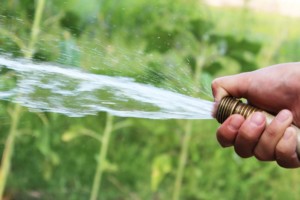Aug
Summer Watering Tips for a Healthy Lawn
Save time and Money with Proper Summer Watering

Did you know: more lawns are killed each summer from over-watering than under-watering? Unlike people, your turfgrass doesn’t need 8 glasses of water a day. Even if it’s upwards of one hundred degrees outside. How often your lawn needs water depends on various factors such as soil type, amount of sunlight, grass type and regional climate. However, on average, most lawns need an inch to an inch and a half of water per week to stay lush and green. Before you set your lawn’s summer watering scheduling, read through these tips provided by our California and Arizona sod experts.
Summer Watering Tips
- Water Late in the Evening or Early Morning – Watering cooled soil in the early morning or evening minimizes the amount of water that evaporates. This allows the roots of your lawn to soak up enough water to withstand the coming heat.
- Deeper, Less Frequent Irrigation is Best – Your lawn should receive at most an inch and a half of water a week. Rather than watering a little bit every day, it’s better to water less for longer periods of time. This encourages your turfgrass to grow deep roots which helps you maintain a healthy, low maintenance lawn.
- Water Evenly – You want to make sure water is penetrating evenly throughout the lawn and is reaching 6 to 8 inches beneath the surface of the soil. To check if water is penetrating deep enough: after 30 minutes of watering, dig a small hole in an inconspicuous spot and check how deeply the water has penetrated. To see if water is being dispersed evenly throughout the lawn: place plastic cups around the yard before watering and check water levels collected in cups after watering. Based on how much water is in each cup, you’ll know which areas of your lawn are receiving more water than others.
- Know Your Soil – Test your soil to know which type of summer watering technique works best. Water penetrates and behaves differently in different types of soils. For instance, clay like soil can’t absorb water quickly. Whereas sandy and loose soil can.
- Shade vs. Sun – Grass growing in a predominantly shaded area will use less water than a sun-bathed lawn. Be cautious when watering shaded areas, as the lack of sun will keep grass wet longer when watered which can expose your grass to bacterial diseases. Also, try to avoid drying your grass by the harsh sunlight, as this can cause slight burn marks to occur on the leaves.
Need help determining what type of soil your lawn has or how much summer watering a specific turf grass variety requires? Ask Mr.WiseGrass! To stay updated on all things sod related, you can also sign up for our newsletter. Happy summer watering!

